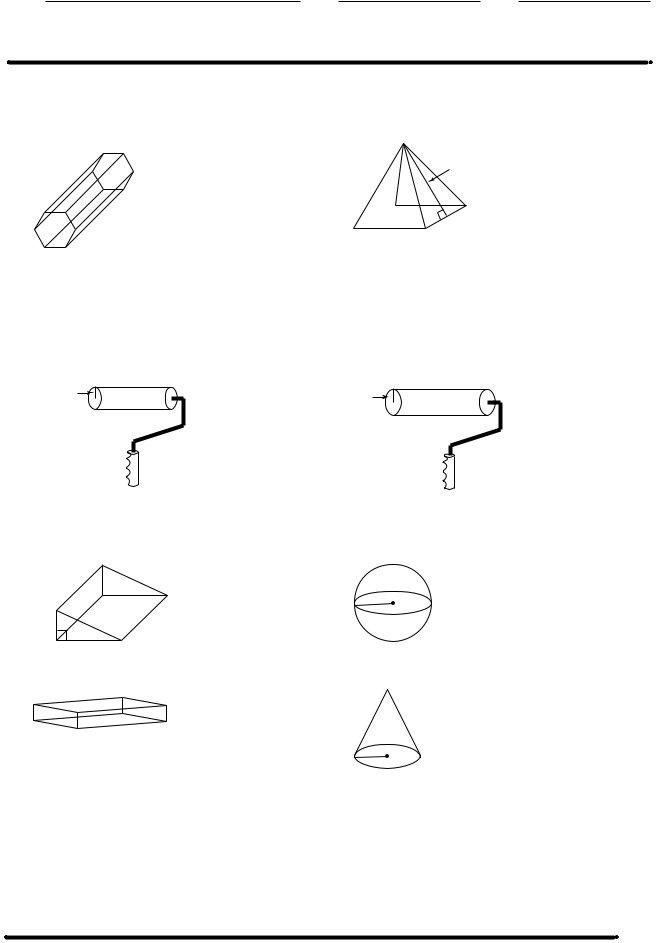The Prentice Hall Gold Geometry form, published by Pearson Education, Inc., serves as a comprehensive resource for assessing students' understanding of geometry concepts presented in Chapter 11. This document includes a wide array of questions that challenge students to apply their knowledge in practical scenarios, such as drawing nets for geometric figures and labeling them with accurate dimensions, calculating the spread of paint by cylindrical rollers based on their dimensions, and determining the volume and surface area for various figures. Moreover, it prompts students to engage in critical thinking, requiring them to compare volumes of regular and irregular objects, approximate the shape of composite figures like an ice cream cone, and explore the mathematical relationships between similar cylinders with respect to their volumes. With its focus on applying geometry to solve real-world problems, the form not only tests students' procedural skills but also encourages a deeper understanding of geometric principles. This attention to both theory and application makes the Prentice Hall Gold Geometry form an essential tool for educators aiming to provide a thorough evaluation of students' abilities in geometry.
| Question | Answer |
|---|---|
| Form Name | Prentice Hall Gold Geometry Form |
| Form Length | 2 pages |
| Fillable? | Yes |
| Fillable fields | 7 |
| Avg. time to fill out | 1 min 54 sec |
| Other names | prentice hall gold geometry form g, form g prentice hall golden geometry, chapter 10 form g geometry answers, prentice hall gold geomtry workbook answers 2 5 form g |

All rights reserved.
© Pearson Education, Inc., publishing as Pearson Prentice Hall.
NameClassDate
Chapter Test |
Form G |
Chapter 11 |
|
Draw a net for each figure. Label each net with its appropriate dimensions.
1. |
3 cm |
3 cm |
2. |
|
|
17 ft |
|
|
|
|
|
|
10 cm |
|
|
16 ft 16 ft
3.Paint roller A has a length of 6 in. and a radius of 2 in. Paint roller B
has a length of 9 in. and a radius of 1 in. Which roller can spread more paint on
a wall in one revolution? Explain, and give your calculations.
A. |
6 in. |
B. |
9 in. |
|
2 in. |
|
1 in. |
|
|
|
Find the volume and surface area of each figure to the nearest tenth.
4. |
|
5. |
|
|
5 m |
6 in. |
17 in. |
|
|
8 in. |
|
6. |
7 cm |
7. |
|
4 cm |
15 ft |
|
|
|
|
11 cm |
|
|
|
9 ft |
Informal Geometry Lesson Plans and Assessments |
Chapter 11 Test |
123 |
|
||
|
|
|

NameClassDate
Chapter Test (continued) |
Form G |
Chapter 11 |
|
8. Refer to the figure at the right. |
|
a. What space figures can you use to approximate the shape of the |
3 cm |
|
|
b. Find the entire figure’s surface area to the nearest tenth. |
|
10 cm
9.Which has a greater volume: two regular cans of soup, each with a diameter of 6 cm and a height of 5 cm, or one
10.Two similar cylinders have heights of 3 cm and 4 cm. What is the ratio of their volumes?
A. 81 |
B. 43 |
C. |
9 |
D. 6427 |
16 |
Find the surface area and volume of each figure to the nearest tenth.
11. |
16 m |
12. |
8 cm |
|
4 m |
|
|
|
|
|
10 cm
7 m
12 cm
12 cm
All rights reserved.
© Pearson Education, Inc., publishing as Pearson Prentice Hall.
124 |
Chapter 11 Test |
Informal Geometry Lesson Plans and Assessments |
|